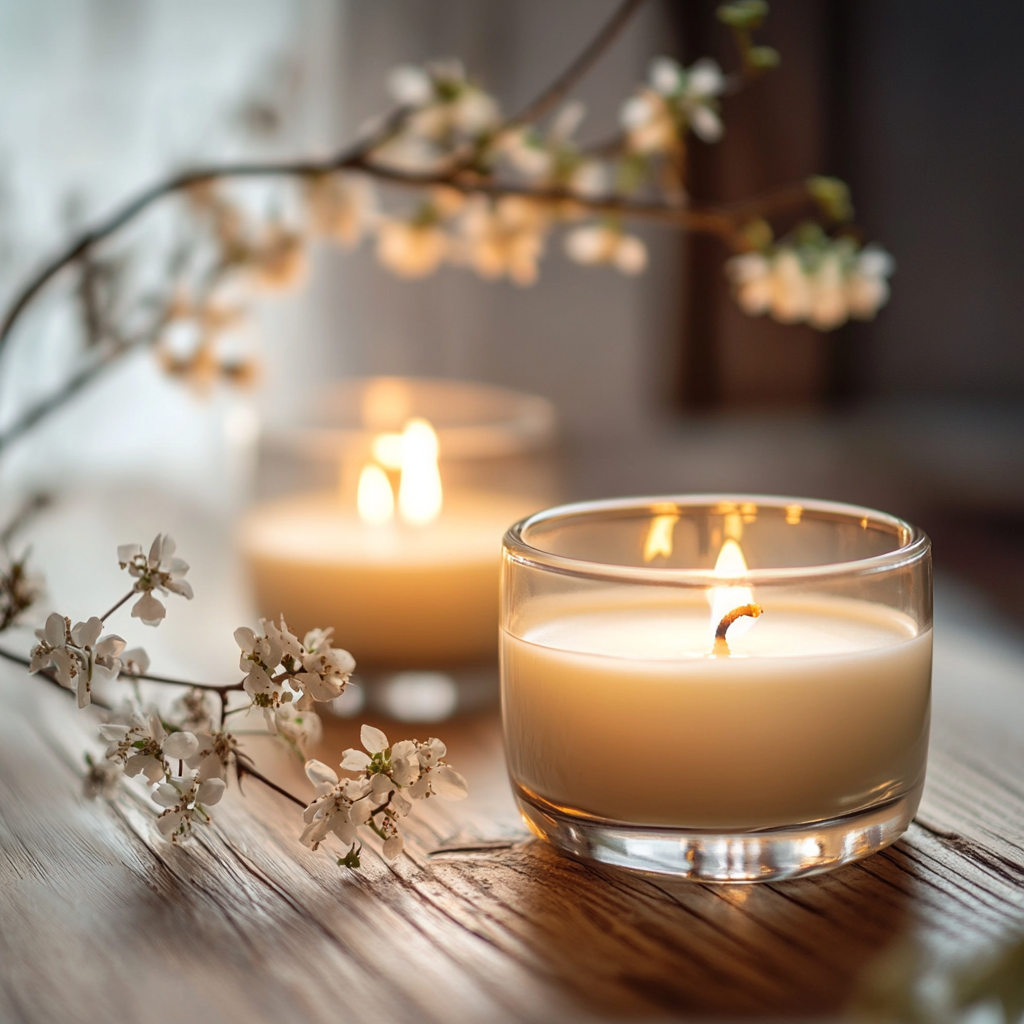Scented candles can greatly enrich the creative atmosphere, becoming an integral part of it. They not only make a space cosy, but also activate inner resources, helping you to concentrate, relax or find inspiration. Thanks to their versatility and aesthetics, candles become an excellent assistant in unlocking creative potential.
Mechanism of action of scented candles
The combination of fragrance and the soft light of a candle affects the emotional state through the sense of smell and sight. Scents activate the limbic system of the brain, which is responsible for mood, memory and imagination. This allows them to be used to stimulate creative energy and improve concentration.
Candle flames create an additional effect due to their rhythmic nature. Watching the fire helps to relieve stress, switch from the outer world to the inner world and create a feeling of cosiness, which is especially important for creative tasks.
The role of scents in creating a creative mood
The scents created by candles have the unique ability to create an atmosphere that is conducive to the creative process. Scented candles affect not only through the sense of smell, but also through visual and emotional stimuli. Their fragrances create a subtle background that helps you concentrate, relax or draw inspiration, depending on the scent chosen.
Candles with invigorating scents, such as citrus or peppermint, awaken energy and set you up for active thinking. They are great for morning work or when you need to ‘switch on’ your brain for complex tasks.
For example, the aroma of lemon or orange stimulates mental activity, improves memory and helps to retain attention. Fresh notes of eucalyptus or rosemary add clarity to thoughts, making them ideal for creative work.
For a more relaxed, intuitive approach to creativity, candles with soft and warm scents are better suited. Lavender, sandalwood or vanilla create a cosy atmosphere and encourage deep thought. Such scents help to cope with anxiety, relieve tension and restore emotional balance, which is especially important when working on projects that require an unconventional approach or long concentration.
The power of scented candles also lies in their ability to evoke associative thinking. Scents that are associated with pleasant memories can evoke vivid images and emotions, stimulating the imagination.
For example, the scent of cinnamon can remind you of winter holidays and the smell of the sea can remind you of summer holidays, creating a flood of inspirational ideas.
Tips for using candles for inspiration
Scented candles can be used effectively to organise your workspace. Here are a few recommendations:
- Choose a candle with a natural composition to avoid unpleasant odours or irritation.
- Light the candle before starting creative work to create an associative link between the scent and the creative process.
- Use different scents depending on the stage of your work: invigorating for a start, relaxing for a rest.
- Position the candle so that it is not distracting, but its scent is still perceptible.
- Extinguish the candle when you’re done working to complete the ritual and switch to relaxation.
These simple steps will help make the creative process more productive and comfortable.
Creating a safe atmosphere with candles
Despite all the benefits, using scented candles requires safety precautions. This will not only keep you healthy, but also protect your property from possible damage.
- Place candles on a stable, heat-resistant surface.
- Never leave them unattended.
- Avoid using cloth, paper or other easily flammable materials near them.
- Use special candle holders to minimise the risk of burns or tipping over.
Following these guidelines will allow you to enjoy the atmosphere created by candles without unnecessary worry.
Criteria for choosing scented candles
Choosing scented candles requires attention to several important aspects that determine their quality, safety and effectiveness. Selection criteria affect not only the atmosphere the candle creates, but also your general well-being.
The first thing to look at is the composition of the candle. Natural wax, such as soya wax or beeswax, is an environmentally friendly and safe material. It does not emit toxic substances when burning and provides an even distribution of fragrance. Synthetic paraffin, on the other hand, can release harmful chemical compounds, especially if the candle is of poor quality.
The quality of the fragrance is another important indicator. Scented candles with the addition of natural essential oils have a milder and more favourable effect on the body. They create a natural and unobtrusive odour that does not cause headaches or allergies. Avoid candles with synthetic fragrances, as their odour can be pungent and unpleasant.
Pay attention to the wick. It is best to choose candles with cotton or wooden wicks. They ensure even burning and minimise smoke. Metal wicks or wicks with chemical impregnations can be unsafe, as they emit harmful substances when burning.
The intensity of the fragrance is also important. The candle should not be too intense, as this can be distracting or cause discomfort. The scent should feel soft, creating a backdrop rather than dominating the space. If the odour is too faint, it could be a sign of poor product quality.
It is worth paying attention to the appearance and packaging of the candle. Candles in glass or ceramic containers are safer to use, as they prevent the wax from spreading and reduce the risk of fire. In addition, such candles look aesthetically pleasing and harmonise with the interior.
Approach the choice of scented candles thoughtfully. The right candle will not only decorate your space, but will also become an indispensable tool for creating a comfortable and inspiring atmosphere.
Questions and Answers
Citrus, mint and rosemary – they stimulate the brain and help you focus.
It is advisable to have several candles for different purposes to adapt the atmosphere to your mood.
Soy or beeswax are considered eco-friendly and safe.
No more than two hours, so that the fragrance remains soft and does not cause discomfort.

